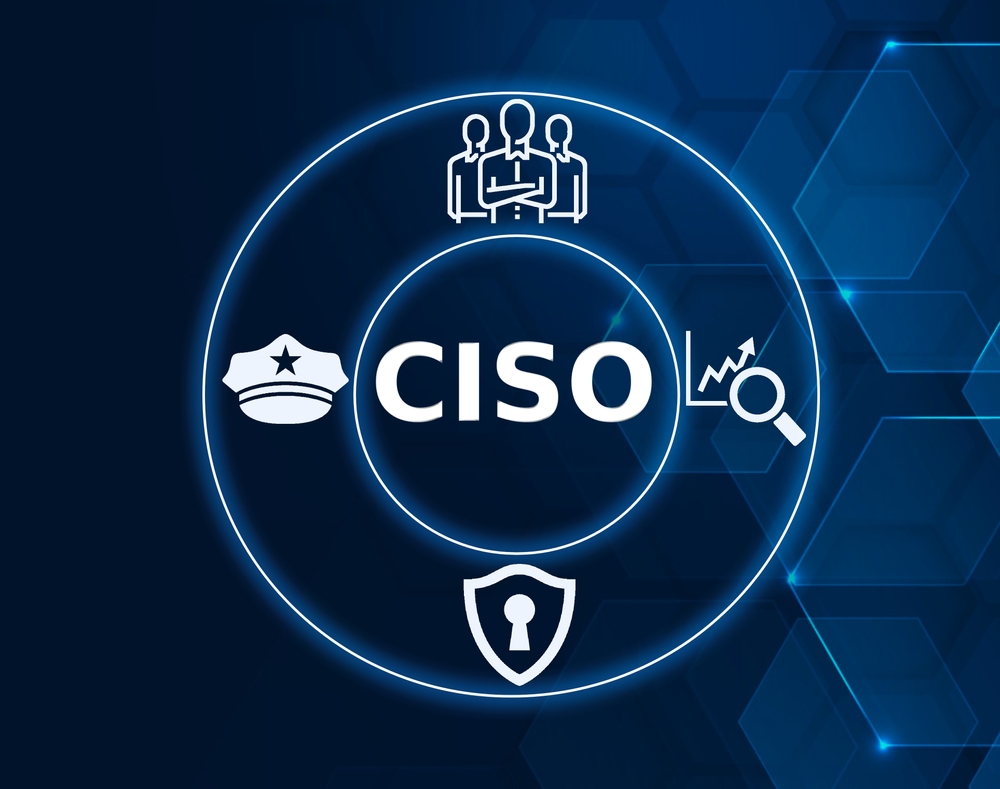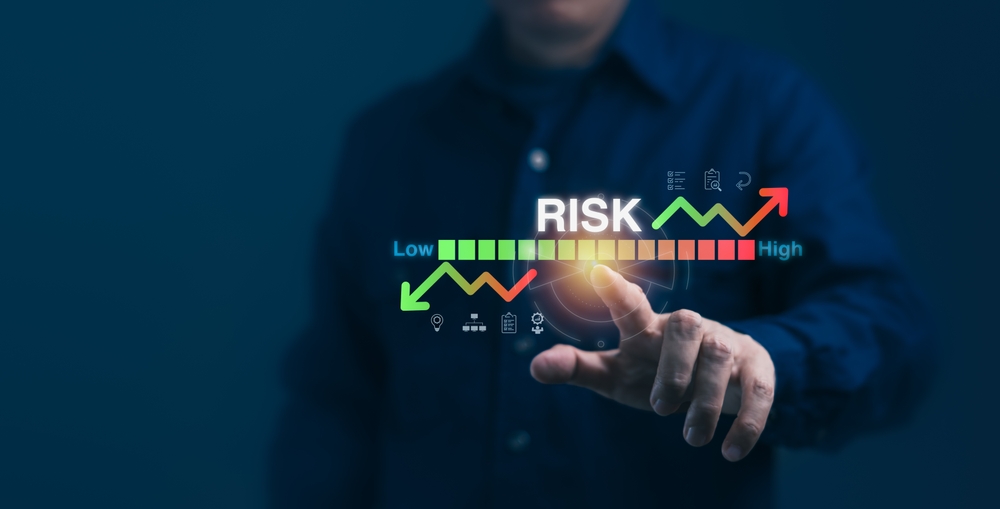Crafting a Comprehensive Cybersecurity Risk Assessment Plan: A Guide for CISOs
By Rey LeClerc Sveinsson, PhD
The Chief Information Security Officer (CISO) occupies a critical role in the organization, tasked with an enormous responsibility: safeguarding it from the ever-changing landscape of cybersecurity threats.
These threats are not only diverse and evolving, but they can also cause catastrophic damage to an organization’s operational integrity, brand reputation, and legal standing.
Therefore, developing a robust cybersecurity risk assessment plan is not just a regulatory formality but a crucial element of your strategic security stance.
This article is meant as a guide for CISOs in their pursuit of crafting a comprehensive cybersecurity risk assessment plan.
The Vital Role of Cybersecurity Risk Assessment
As cyber threats become more sophisticated and frequent, the importance of a robust cybersecurity risk assessment cannot be overstated. Such an assessment is critical as it offers a structured and methodical approach to identifying vulnerabilities within an organization’s network and systems. These are the weak points that, if exploited by cyber threats, could lead to significant security breaches.
A comprehensive cybersecurity risk assessment plan goes beyond mere identification of threats. It critically evaluates the potential impacts that different types of cyberattacks could have on the organization.
This evaluation is vital for understanding the magnitude of potential damage, be it financial, reputational, or operational, that could result from security breaches.
For instance, a data breach could expose sensitive customer information, leading to loss of trust and potential legal consequences, while a ransomware attack could cripple critical infrastructure, leading to significant downtime and operational disruption.
Moreover, once these vulnerabilities and their potential impacts are clearly understood, the risk assessment process plays a crucial role in guiding the development of effective countermeasures and strategies to mitigate these risks. This includes prioritizing risks based on their likelihood and potential impact, which enables organizations to allocate resources more efficiently and ensure that the most critical vulnerabilities are addressed first.
This proactive approach to cybersecurity - anticipating and mitigating risks before they can be exploited - is indispensable in safeguarding an organization’s assets and maintaining its operations smoothly.
Without such strategic foresight, organizations might find themselves perpetually on the defensive, caught in a costly and disruptive cycle of responding to incidents after they occur.
Therefore, a well-conducted cybersecurity risk assessment is not just a technical necessity but a strategic imperative in the modern threat landscape.
5 Key Factors to Consider Before Crafting a Cybersecurity Risk Assessment Plan
The process of creating a cybersecurity risk assessment plan must be tailored to meet the unique needs and nuances of your organization.
This involves thoroughly understanding the specialized risks associated with your industry, the nature of the data you handle, the technologies you utilize, and organizational culture.
Industry-Specific Threats
Various industries encounter unique threats due to their operational nature and regulatory demands. For instance, the financial sector is particularly vulnerable to cyberattacks owing to the lucrative nature of financial data. In contrast, healthcare organizations face critical needs to protect patient information to comply with strict privacy regulations.
Organizational Structure
The size and configuration of an organization significantly affects risk exposure. Large, multinational corporations may grapple with complex cyber threats across different geographical areas, necessitating a broader and more robust risk assessment strategy than what might be required for smaller, local enterprises.
Technological Landscape
The specific technologies an organization employs will dictate the cybersecurity measures needed. For example, businesses that heavily utilize cloud computing must ensure robust security protocols in their cloud operations and thoroughly understand their cloud service providers' security measures.
Compliance Requirements
Different sectors are governed by varied regulatory frameworks that shape their risk assessment methodologies. Organizations that process credit card transactions, for instance, must adhere to PCI DSS standards, which set forth critical security mandates. Industries in the medical space must consider HIPAA. Everyone should take into consideration the various privacy regulations within scope such as the GDPR and relevant state privacy regulations.
Organizational Culture
The prevailing security culture within an organization profoundly influences the implementation of policies and procedures. A robust culture emphasizing security awareness and compliance can significantly boost the effectiveness of a cybersecurity plan.
By considering these five key factors, your cybersecurity risk assessment plan can be precisely crafted to meet the specific challenges and requirements of your organization, enhancing its overall security posture and resilience against cyber threats.
Step-by-Step Guide to Creating a Cybersecurity Risk Assessment Plan
Now that you understand your organization’s unique challenges, technological landscape, and regulatory obligations, it’s time to craft and implement the risk assessment plan. Here are the steps you will need to take:
Step 1 - Define the Scope and Objectives
Outline the boundaries and intended outcomes of the cybersecurity risk assessment.
- Identify Critical Assets: Start by listing the assets you must protect. This category includes physical devices, data in motion and at rest, essential software systems, and services vital for your organization's day-to-day functions.
- Determine the Scope: Specify which areas of your organization the assessment will cover. This could include everything from a single department or specific technology to the entire organizational structure.
- Set Assessment Goals: Define clear objectives for what the assessment should accomplish. Typical goals might include ensuring compliance with relevant regulations, securing critical assets, or enhancing the organization's overall security framework.
Step 2 - Conduct a Risk Identification Exercise
Identify potential cybersecurity threats and vulnerabilities.
- Threat Modeling: Identify different types of security threats to your assets. You should spot problems such as identity faking, unauthorized data changes, covering up illegal activities, exposing private information, overwhelming systems to shut them down, and unauthorized access to restricted privileges.
- Vulnerability Scanning: Use automated tools to regularly scan your network and systems for vulnerabilities, helping ensure timely detection of security gaps.
- Consult with Stakeholders: Engage with stakeholders throughout the organization to gather diverse insights on potential security concerns. This collaboration helps ensure a comprehensive understanding of risks from multiple organizational perspectives.
Step 3 - Perform Risk Analysis and Evaluation
Evaluate the identified risks to determine their potential impact and likelihood.
- Risk Assessment Frameworks: Implement frameworks such as OCTAVE, NIST, or ISO 27005 to analyze and rank risks according to their severity and potential impact on the organization. OCTAVE, NIST, and ISO 27005 are frameworks for managing and assessing cybersecurity risk. OCTAVE emphasizes organizational risk and security practices, NIST provides standards and guidelines for federal agencies and organizations to improve their cybersecurity, and ISO 27005 offers an international standard for risk management within the context of information security.
- Quantitative and Qualitative Assessments: Employ quantitative methods (such as estimating financial impact) and qualitative approaches (such as evaluating reputational damage) to gauge the impact and probability of each identified risk.
- Prioritize Risks: Create a ranked list of risks from the analysis, focusing on those that pose the greatest threat in terms of damage or likelihood of occurrence. This prioritization helps focus resources and efforts on the most critical risks.
Step 4 - Develop Risk Mitigation Strategies
Formulate strategies to either reduce or control the identified risks.
- Risk Treatment Options: Choose appropriate strategies such as accepting, avoiding, transferring, or mitigating risks. Consider employing new technologies, revising policies, or strengthening security protocols as part of the mitigation efforts.
- Create Action Plans: Develop detailed action plans for each high-priority risk, specifying the necessary steps to mitigate the risk, along with the required resources and implementation timelines.
- Incident Response Planning: Incorporate a comprehensive incident response strategy within your risk management plan to ensure rapid and effective action in response to security breaches.
Step 5 - Implement the Risk Mitigation Plans
Execute the formulated risk mitigation strategies.
- Allocate Resources: Ensure adequate budget, staff, and technology are available to carry out the mitigation plans effectively.
- Training and Awareness: Hold ongoing training sessions and awareness campaigns to make sure every employee comprehends their role in upholding cybersecurity standards.
- Deploy Solutions: Roll out the necessary security solutions and update policies according to the plan, while keeping track of the implementation progress to ensure adherence to the established timelines.
Step 6 - Monitor and Review
Regularly oversee the security environment and evaluate the effectiveness of the measures in place.
- Continuous Monitoring: Employ various tools and processes to consistently monitor your environment for emerging vulnerabilities and threats.
- Performance Review: Periodically assess the effectiveness of the security measures that have been implemented, as well as the continued relevance of the risk assessment plan.
- Update and Adapt: Utilize the insights gained from monitoring and reviews to update your risk assessment and adjust your mitigation strategies in response to new threats and organizational changes.
How to Ensure Continuous Improvement of Your Risk Assessment Plan
Cybersecurity is a field characterized by rapid changes and evolving threats, making it essential for any risk assessment plan to be dynamic and adaptable.
To maintain an effective cybersecurity posture, it's crucial that your risk management strategies not only address current threats but also adapt to new vulnerabilities and organizational shifts as they occur.
Key components for ensuring continuous improvement in your cybersecurity efforts include:
1. Regular Updates to the Risk Assessment Plan
- Threat Intelligence Integration: Continually integrate the latest threat intelligence into your risk assessment plan. This involves staying informed about emerging threats and vulnerabilities that could impact your organization.
- Technology Updates: As new security technologies and tools become available, evaluate their potential to enhance your defense strategies. Updating your technological tools should be a regular part of your strategy to combat new types of cyber threats effectively.
2. Continuous Education and Training
- Ongoing Employee Training: Cybersecurity awareness and training should be an ongoing effort for all employees, from new hires to executives. Regular training sessions help inculcate best practices, such as recognizing phishing attempts and securely managing data.
- Advanced Training for IT Staff: Provide specialized, up-to-date training for your IT and security teams to ensure they are skilled in the latest cybersecurity technologies and defense mechanisms.
3. Stakeholder Engagement
- Regular Communication: Maintain regular communication with all stakeholders, including management, employees, and external partners. This ensures everyone is aware of the current cybersecurity status and understands their role in maintaining it.
- Feedback Mechanisms: Implement effective feedback mechanisms to gather insights and suggestions from users at all levels. This feedback can provide practical insights into potential security gaps and areas for improvement.
4. Performance Metrics and Review
- Security Metrics: Establish and monitor key performance indicators (KPIs) related to cybersecurity. These might include metrics on incident response times, the number of detected incidents, and user compliance rates.
- Regular Audits: Conduct regular security audits to assess the effectiveness of current security measures. Audits help identify weaknesses in your security posture and prompt necessary adjustments.
5. Adaptation to Organizational Changes
- Alignment with Business Objectives: Ensure that your cybersecurity strategies align with broader business objectives and adjust as these objectives evolve.
- Scalability: As your organization grows, so should your cybersecurity measures. Ensure that your strategies are scalable to handle increased data flows and additional network stress.
By focusing on these areas, you can ensure that your cybersecurity risk assessment plan remains robust, responsive, and effective, keeping pace with both the dynamic nature of cyber threats and the evolving needs of your organization.
CISOs Depend on ERMProtect
A comprehensive cybersecurity risk assessment plan is essential for any organization aiming to protect its assets from cyber threats effectively. By following this step-by-step guide, CISOs can ensure their risk assessment process is thorough, up-to-date, and aligned with their organizational needs, thereby fortifying cybersecurity defenses against potential threats.
For further reading and more detailed frameworks, CISOs can refer to resources such as NIST's Cybersecurity Framework, ISO/IEC standards ISO/IEC 27001:2022, and the Center for Internet Security (CIS) Controls. These provide additional insights and detailed guidelines to enhance your cybersecurity risk assessment plans.
ERMProtect offers a range of services and solutions that can assist organizations in strengthening their cybersecurity defenses across several key areas, including the crucial aspects of integrity, availability, and confidentiality of data.
We conduct thorough security audits and assessments to identify vulnerabilities in an organization’s systems and processes that could potentially compromise data. By identifying these weaknesses, ERMProtect helps organizations take corrective measures before any data tampering can occur.
ERMProtect can help your organization develop and test its Cybersecurity Risk Assessment Plan to protect and mitigate cybersecurity risks. We also perform gap analyses for compliance with more than 60 data security standards, law, and regulations. For a full listing of services, click here. To set up an appointment for a free consultation, click here.
About the Author
Dr. Rey Leclerc Sveinsson is an expert in Privacy and Data Protection, Information Security, and Technology Governance, Risk & Compliance (IT GRC). He has developed information assurance programs for major organizations globally during his career as well as serving as a Consultant for ERMProtect. He has a PhD in Information Systems and multiple master’s degrees in the areas of privacy, information technology, and cybersecurity laws.
Subscribe to Our Weekly Newsletter
Intelligence and Insights

Are You Prepared for an AI-Powered Cyber Attack?

AI Privacy Risks







